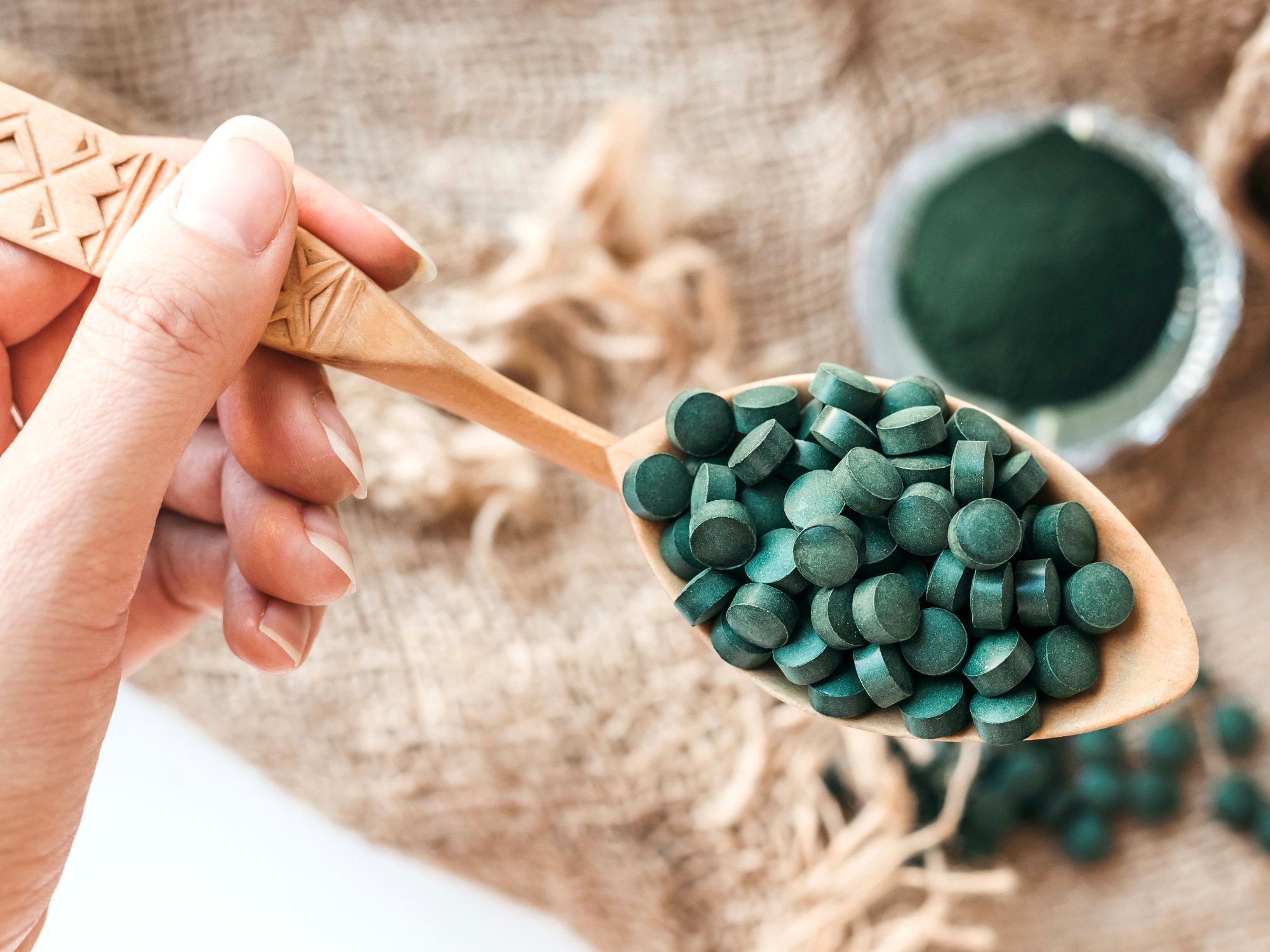Your basket is empty
Already have an account? Log in to check out faster.
Already have an account? Log in to check out faster.

Spirulina is considered one of the most nutritious foods in the world, but its taste is quite distinctive and may not be pleasing to everyone. So, what is the best way to consume this valuable food—powder or tablets?
Its taste somewhat resembles chlorophyll and the sea, although it is less pronounced than other algae since it is freshwater. It is actually a "cyanobacterium," not an alga.
Dried spirulina powder can be used as a spice, added as an ingredient in recipes. Let's recap what Spirulina is and the best way to consume it.
Spirulina, or Arthrospira platensis, is a species belonging to the Cyanobacteria class, formerly known as the class of spiral-shaped green-blue unicellular algae. It has a dark green color due to chlorophyll, with blue reflections from the phycocyanin pigment.
Spirulina is a freshwater cyanobacterium that primarily develops in lakes and waterways where the environment is alkaline. It is a very resilient species with ancient origins, existing since the dawn of the Earth.
The name Spirulina is derived from the shape of its filaments, which resemble a spiral, though they are so microscopic that they are invisible to the naked eye.
Spirulina has a high nutritional value, containing essential vitamins, minerals, and a high protein content. Additionally, its chemical composition gives it antioxidant properties and a supportive, restorative action.
For these reasons, it is classified as a Superfood, meaning foods with nutritional characteristics that are beneficial to health.
In recent years, Spirulina has been increasingly at the center of global debates for its characteristics and benefits. The World Health Organization has called Spirulina "the best food of the 21st century," while the UN referred to it as "the best food for the future" at the 1974 World Food Conference.
Even NASA has chosen it among the foods to be cultivated during long-term space missions!
Spirulina is available in powder, capsules, or tablet form. When choosing the best Spirulina, several key factors should be considered:
Nutritional characteristics: Carefully read the label.
Processing: It is very important that Spirulina has been processed at low temperatures through a cold-drying method to preserve all its nutrients.
Organic certification: This ensures that the product has been grown without the use of pesticides and chemical fertilizers.
Mode of consumption: Depending on individual needs, tablets are more convenient as a dietary supplement, while organic Spirulina powder is more practical to add to recipes, beverages, or smoothies.
The only difference is the mode of consumption and dosage. Tablets are more convenient as a dietary supplement, especially if you do not like the taste of Spirulina. The powder, on the other hand, is more practical for culinary use in recipes.
The production process is the same. Spirulina is harvested and then gently dried at low temperatures. It is then pulverized into a fine, dark green powder with marine reflections and finally packaged. The difference between powder and tablets is the subsequent compression step of the powder, which is always done at very low temperatures, preserving all the nutritional characteristics and high levels of phycocyanin.
Here are some tips on how to use Spirulina, which might help you decide whether to buy powder or tablets.
Powder: Organic Spirulina powder is fantastic to use as a spice, enriching recipes with flavor while making them healthier!
It is advisable to consume about a teaspoon (3 g) per day. It can be added to savory dishes, sprinkled over vegetables, roasts, potatoes, or used as a seasoning for salads or in bread and homemade pasta dough. You can even make Spirulina gnocchi!
It can also be used in sweet recipes, such as cookies and cakes. Finally, it can be added to smoothies, beverages, fruit juices, milk, and yogurt. It is especially great for athletes or those following a vegetarian diet, as it is an important protein source.
Spirulina powder is very versatile and can be enjoyed in both sweet and savory recipes. It can also be used in cosmetics, such as in beauty recipes like face masks, hair masks, or natural scrubs.
Spirulina is a safe food, but it should always be consumed in the right ways and quantities. Whether powder or tablets, it is important to allow the body time to adjust, so start with a minimal dose and gradually increase.
In the initial stages or in case of excessive ingestion, it may cause mild side effects such as gastrointestinal disturbances. Before introducing Spirulina into your diet, always consult a doctor in case of illnesses, pregnancy, or breastfeeding, especially for those with thyroid dysfunctions and autoimmune diseases. It is also not recommended for those on anticoagulant treatments and people with phenylketonuria.
Spirulina Cookies:
Preparation Time: ~45 min
Ingredients:
150 g whole grain rice flour
30 g corn oil
20 g potato starch
60 g coconut flour
100 g soy milk
30 g cane sugar
Chocolate chips (optional)
1 teaspoon baking powder
1 teaspoon NaturaleBio Spirulina
Preparation:
Sift the flour, potato starch, and baking powder, then add the cane sugar.
Gradually add soy milk and coconut flour (previously dissolved in a bit of water), Spirulina, and chocolate chips if desired.
Let the dough rest in the refrigerator for at least twenty minutes.
Roll out the dough and create cookies ready to bake.
Bake for 30 minutes in a hot oven at 150°.
0 comments